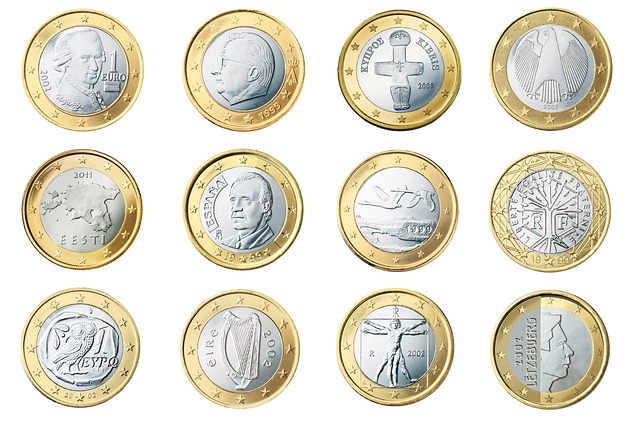The Future of Renewable Energy Investing in Norway
Norway is known for its stunning landscapes and rich natural resources, but beyond its breathtaking fjords and vast forests lies a transformative energy landscape that is gaining global attention. With a focus on sustainability and reducing carbon emissions, Norway is leading the charge in renewable energy investments. This article explores the current state and future prospects of renewable energy investing in Norway, highlighting the driving forces, innovative technologies, policy frameworks, and the role of both local and international investors.
The Current State of Renewable Energy in Norway
Norway has long been a pioneer in renewable energy, primarily due to its vast hydropower resources. Approximately 95% of the country’s electricity generation comes from hydropower, making it one of the most sustainable energy systems in the world. The Norwegian government has been proactive in diversifying its energy portfolio, increasingly investing in other renewable sources such as wind and solar power.
The country has significant potential for expanding wind energy, both onshore and offshore. The North Sea is emerging as a hub for offshore wind farms, taking advantage of strong and consistent winds. Meanwhile, the government has also recognized the potential for solar energy, particularly in urban environments, leading to several initiatives aimed at increasing solar installations across the country.
Driving Forces Behind Renewable Energy Investment
Several factors are propelling the investment in renewable energy in Norway:
Government Policies and Incentives
The Norwegian government has implemented a supportive policy framework designed to promote renewable energy investments. This includes various subsidies, tax incentives, and financial instruments aimed at attracting both domestic and foreign investors. The government’s commitment to reaching carbon neutrality by 2050 plays a crucial role in bolstering investment confidence in renewable energy projects.
Technological Advancements
Technological innovations are at the forefront of Norway’s renewable energy strategy. Advancements in turbine efficiency, energy storage solutions, and grid management systems are making renewable energy more reliable and accessible. As technology continues to evolve, the costs associated with renewable installations are expected to decline, making them an even more attractive investment.
Global Market Trends
The global shift towards sustainability has been monumental, with investors and consumers alike prioritizing green energy solutions. As Norway is perceived as a leader in renewable energy, this reputation attracts international investments. Furthermore, the United Nations’ Sustainable Development Goals (SDGs) and global climate agreements are pushing nations to transition toward cleaner energy sources, creating a favorable environment for investment in renewables.
Investment Opportunities in Renewable Energy
Looking ahead, several areas present lucrative investment opportunities within Norway’s renewable energy sector:
Hydropower
While hydropower already accounts for a significant portion of Norway’s energy mix, there remains potential for modernization and small-scale projects. Investing in upgrading existing infrastructure for efficiency improvements and reduced environmental impact can yield substantial returns.
Wind Energy
The expansion of both onshore and offshore wind farms presents a prime opportunity for investors. Several new offshore wind projects are currently in development, showcasing Norway’s commitment to harnessing wind energy. Partnerships between government entities and private investors can facilitate funding and support for these ambitious endeavors.
Solar Energy
Although less prevalent than hydropower and wind, solar energy is gaining traction in Norway’s renewable landscape. Innovations in solar technology, coupled with favorable government incentives, have made solar energy more feasible for homeowners and businesses alike. Investors can explore opportunities in solar farms, residential solar installations, and energy storage solutions.
Green Hydrogen
Green hydrogen is emerging as a growing sector of interest due to its potential to decarbonize hard-to-abate industries such as shipping and heavy transport. With access to abundant renewable energy sources, Norway is strategically positioned to become a leader in hydrogen production. Investments in research, production facilities, and infrastructure for distribution can open doors to sustainable growth in this sector.
Challenges and Considerations
While there is vast potential for renewable energy investment in Norway, several challenges must be navigated:
Regulatory Hurdles
The regulatory landscape can be intricate, with multiple layers of national and regional authorities involved in energy project approvals. Investors must have a keen understanding of the permitting processes and navigate the complexities of environmental regulations, which can potentially delay projects.
Market Competition
As the demand for renewable energy investments increases, the competition for projects and resources is intensifying. Investors must carefully assess market dynamics and ensure that their strategies differentiate them from the competition to secure profitable opportunities.
Technological Risks
While technological advancements present opportunities, they also pose risks. The rapid pace of innovation can render existing technologies obsolete or make investments less viable. Investors must stay informed about emerging technologies and trends in the renewable energy sector to make informed decisions.
The Role of International Investors
International investors are playing an increasingly crucial role in Norway’s renewable energy landscape. With a stable political climate and a clear commitment to sustainability, Norway is an attractive destination for foreign capital. Collaborative ventures between domestic companies and international investors are vital to unlocking the full potential of the renewable energy sector.
Building partnerships with local firms can facilitate market entry for international investors, leveraging local expertise and networks. Moreover, these collaborations can provide access to funding streams, share risks, and enhance project development capabilities.
Conclusion
The future of renewable energy investing in Norway looks promising, characterized by government support, technological advancements, and a clear shift towards sustainability. As the country continues to diversify its energy portfolio and innovate within the sector, a wealth of investment opportunities will likely arise.
Investors who are willing to navigate regulatory complexities, engage with local partners, and remain attentive to technological trends can position themselves favorably within this growing market. With its ambition to achieve carbon neutrality by 2050, Norway is not only leading the way for renewable energy investment but is also setting a global example for sustainable development.










